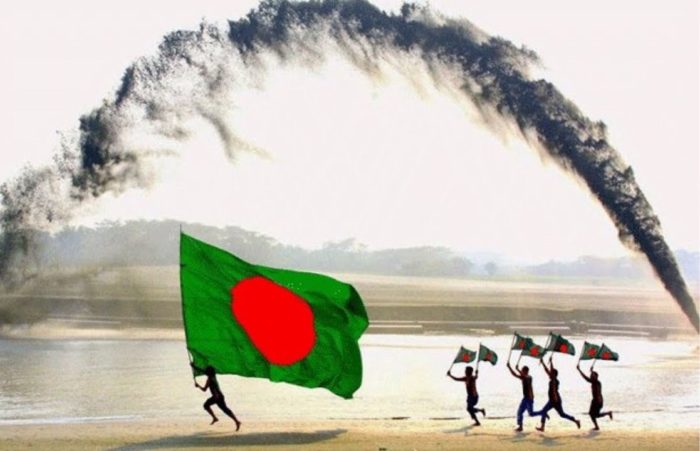

“On this day in 1971, we achieved our long-cherished victory after a long struggle and bloodshed war,” President M Abdul Hamid said in his message, recalling particularly Father of the Nation Bangabandhu Sheikh Mujibur Rahman as the architect of the independence alongside the freedom fighters. The president and Prime Minister earlier issued statements greeting the countrymen on the occasion of the Victory Day. Many people visited the site in their individual capacity though the pandemic required extra cautions, scaling down the usual festivity. Thousands of people representing different political and other organisations then thronged the Memorial’s main altar to offer their floral tributes. Several cabinet members including Liberation War Minister AKM Mozammel Huq, foreign diplomats and senior officials including the chiefs of three armed services offered wreaths at the memorial in person. Parliamentary Speaker Dr Shirin Sharmin Chaudhury was represented at the Memorial by Jatiya Sangsad sergeant-at-arms. Please enable JavaScript in your browser to complete this form.Military secretaries to the President and the Premier placed wreaths on their behalf at the National Memorial at suburban Savar in the early morning ceremony while the COVID 19 prevented their physical presence at the scene.Īrmed forces bugles played the last post as the military aides placed the wreaths when as part of military rituals the National Flag was gradually revealed, then lowered to half mast position and then revealed again.Īn integrated military, navy and air force contingent offered the honour guard to mark the ceremony.

Window.FB.Event.subscribe('xfbml.render', function() (document, 'script', 'facebook-jssdk')) On the morning of the day, a thirty-one gun salute is shot. In Bangladesh, independence celebrations are characterized by parades, speeches, fairs, and ceremonial events designed to commemorate the country’s liberation. The war, which became known as the “Bangladesh War of Independence,” finally came to an end on December 16, 1971. For nine months following that day, a liberation war raged between both regions, leading to many people dying. Unfortunately, the story didn’t end there. On the night of March 25, 1971, the Pakistan Army declared “Operation Searchlight,” a military operation that was essentially Bengali genocide, leading to approximately 3,000,000 Bengalis being killed indiscriminately.įinally, on the morning of March 26, Sheikh Mujibur Rahman declared the independence of East Pakistan from West Pakistan. The East Pakistan government began arresting army personnel who were from East Pakistan, leading to forced disappearances. This led to a demand for independence by the people of East Pakistan. The government refused to hand over power to Rahman.

After the general elections, Sheikh Mujibur Rahman, who was from East Pakistan (Bangladesh), won the elections. However, in 1970, the country was led by President Yahya Khan, from the minority West Pakistan region. After this, the area now known as Bangladesh was referred to as East Bengal but later called East Pakistan. History of Independence Day of Bangladeshĭuring the Partition of India on August 14, 1947, Pakistan gained independence from Britain and became separated from India.


 0 kommentar(er)
0 kommentar(er)
